Leaving
Custer State Park and driving to Crazy Horse was a pleasant ride with
nice scenery. |
|
|
Below: Nature Gates
- 46 feet long, with 270 brass silhouettes of animals. |
|
|
|
|
Below: This 9-foot 6-inch
bronze statue of Fighting Stallions was on the grounds of the
Crazy Horse Memorial.
The two
RV Gypsies also saw a Fighting Stallions statue in 2014 at Brookgreen
Gardens in 2014. If you jump ahead to the 2014 photo, please return
here. Actually, this 2013 is a better photo though. |
|
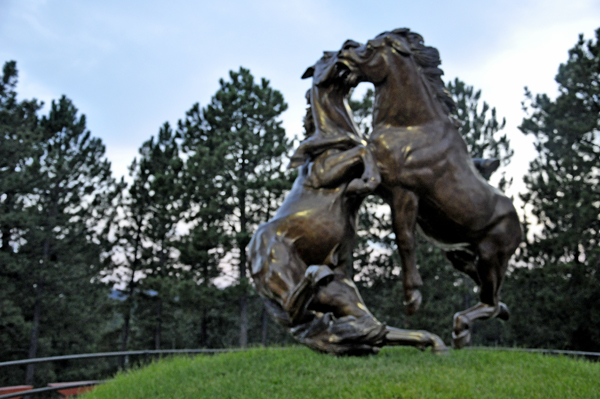 |
|
Below: The exhibits and museum were vast
with so much information. Of course the real attraction is the Crazy
Horse Carving itself. The two RV Gypsies were disappointed that they
could not get closer to the monument, and after paying $10 per person
to get in, they did not want to pay more to take the bus down to get
closer. It would be nice if the entrance fee to the monument also included
the bus ride. If the two RV Gypsies were to ever return here, they would
only go on the weekend when they let the public hike to the top. The
two RV Gypsies missed the dance demonstration on the Viewing Veranda
because they got there too late, because of spending the day at Custer
State Park. |
|
|
|
This buffalo statue was black and white
on one side
and red and yellow on the other side. |
|
|
|
Crazy Horse
literally means "His-Horse-Is-Crazy" or "His-Horse-Is-Spirited.
" Crazy Horse was a Native American war leader of the Oglala Lakota.
He took up arms against the U.S. Federal Government to fight against
encroachments on the territories and way of life of the Lakota people,
including leading a war party to victory at the Battle of the Little
Bighorn in June 1876. |
After surrendering to U.S.
troops under General Crook in 1877, Crazy Horse was fatally wounded
by a military guard while allegedly resisting imprisonment at Camp Robinson
in present-day Nebraska. He ranks among the most notable and iconic
of Native American tribal members and has been honored by the U.S. Postal
Service with a Great Americans series postage stamp. |
| Above quote from From Wikipedia, the free encyclopedia |
|
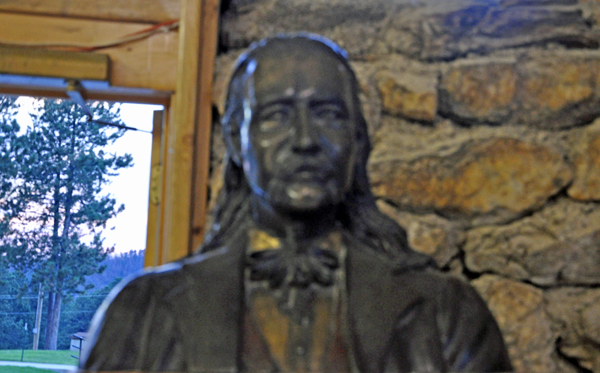 |
|
|
|
|
"My fellow chiefs and
I would like the white man to know the red man has great heroes, too."
These are the words Chief Henry Standing Bear wrote to sculptor Corkage
Ziolkowski in 1939 urging him to come back to the Black Hills and carve
a mountain sculpture honoring American Indians. Ziolkowski arrived in
the Black Hills in May of 1947. He worked on the mountain until his
death on October 20, 1982. His family continues the dream and work progresses
on the world's largest mountain sculpture. When finished, Crazy Horse
will stand 641 feet long and 563 feet high. |
| Above quote from http://www.travelsd.com/Attractions/Crazy-Horse |
Below: Statue of Corkage
Ziolkowski by Ray Kroc |
|
Below: Take a rock from
Crazy Horse Mountain, leave a contribution |
|
|
|
Below: Six views of an amazing
motorcycle on display in the Welcome Center at Crazy Horse memorial |
|
|
|
|
|
|
 An
Army motorcycle which could be won by someone An
Army motorcycle which could be won by someone
|
|
Shaquille O'Neal's shoe
size 24 on display |
Autographed Green Bay Packers football |
|
|
When Corkage accepted the
invitation of Native Americans to carve a mountain memorial to their
culture, he determined that it would be a humanitarian project. He wanted
Crazy Horse to be much more than just a colossal mountain carving. He
directed that the Memorial also would tell present and future generations
the story of Native Americans by displaying outstanding examples of
Indian culture and heritage, both of yesterday and today. The museum
collection started out with single display donated in 1965 by Charles
Eder, Assiniboine-Sioux, from Montana. Mr. Eder’s impressive collection
remains on display in a place of honor in the Orientation and Welcome
Center at Crazy Horse Memorial. Each year, tribal members and others
contribute Native American art and artifacts to enhance the collection
and make it more comprehensive and representative of all North American
tribes. Close to 90 percent of the museum collection has been donated,
both by Native Americans and non-Natives. |
|
|
|
|
|
|
|
|
|
|
At first the two RV Gypsies
did not know what the below T-shirt has to do with Indians or Crazy
Horse, but it sure made the two RV Gypsies laugh. But thinking it over,
the T-shirt must represent the fact that much of the mountain was carved
by blasting. |
|
Below: Work on the Crazy Horse
Memorial began in 1948. The two RV Gypsies doubt that it will be completed
in their lifetime. |
|
Below; When finally completed,
the monument depicting Chief Crazy Horse on his steed will be 641 feet
long by 563 feet high, the largest sculpture in the world. |
|
Below: On the Viewing Veranda
there is a scale model of the carving that is 1/34th of the original
size. The photo below on the left shows scale model with the real mountain
3/4 of a mile in the distance. The photo below on the right is the back
side of the scale model carving. |
|
|
Below: Views of the world's
largest carving in progress, as seen from the Viewing Veranda. |
|
|
|
|
|
|
|
|
Below: Legends in Light Show
is a laser-light storytelling presentation illuminates cultural diversities
and celebrates similarities and encourages harmony among all people.
Because it was not easy to photograph the light show, below is the brochure
given out at the Crazy Horse Memorial. |
|
NOTE: Lee and Karen Duquette planned on returning here in 2025 to
see how much the work had progressed, BUT due to Lee Duquette ending
up in serious condition in the hospital their trip was cut short. Lee
almost died, but the amazing hospital
staff helped in survive and they had to return to their home base. |
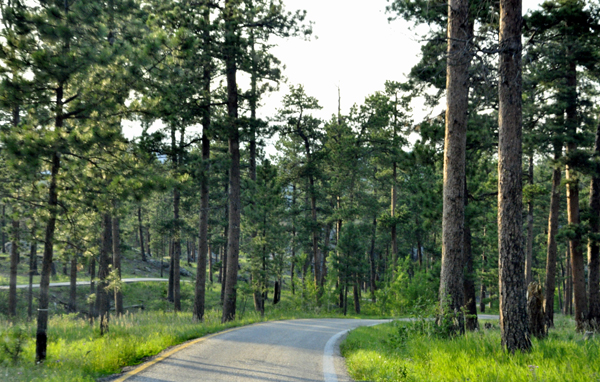
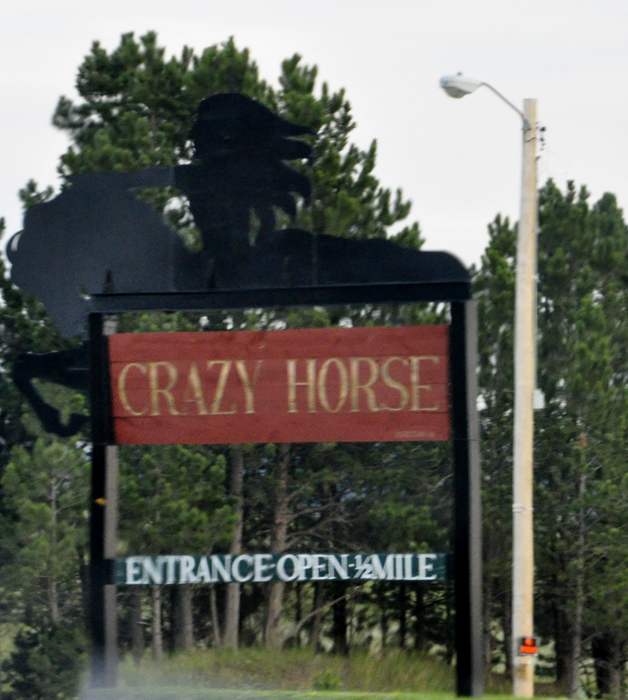
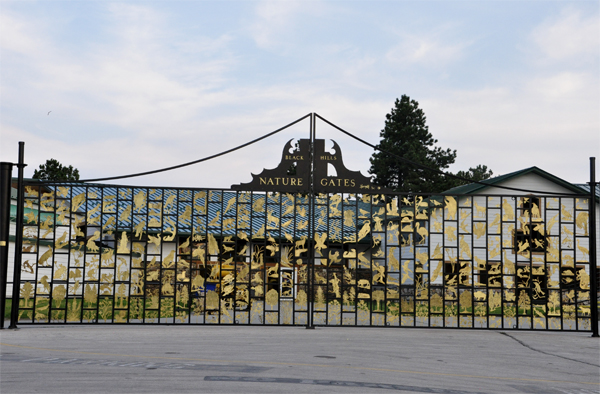

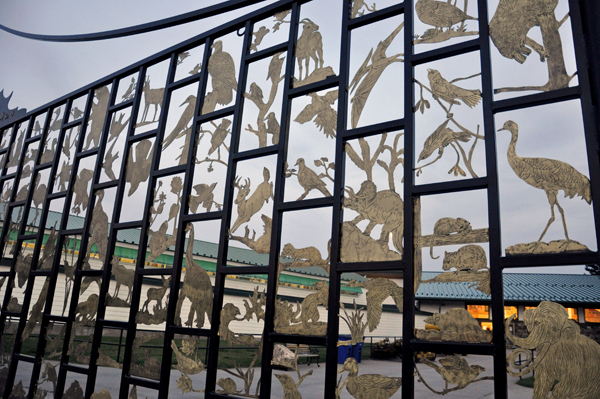
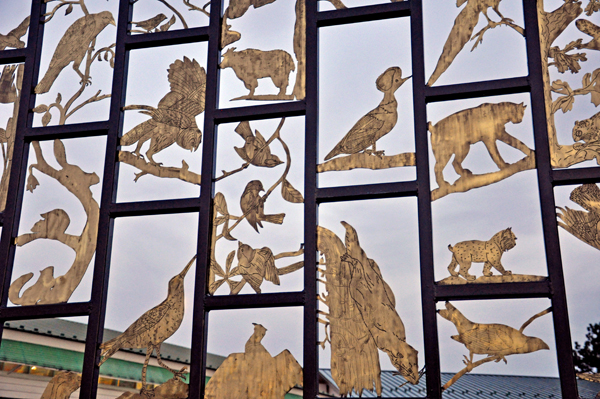
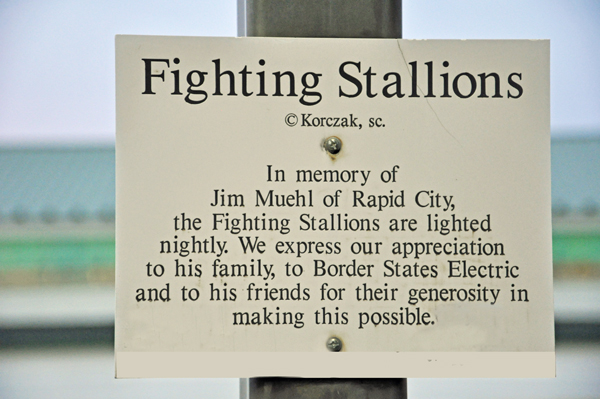

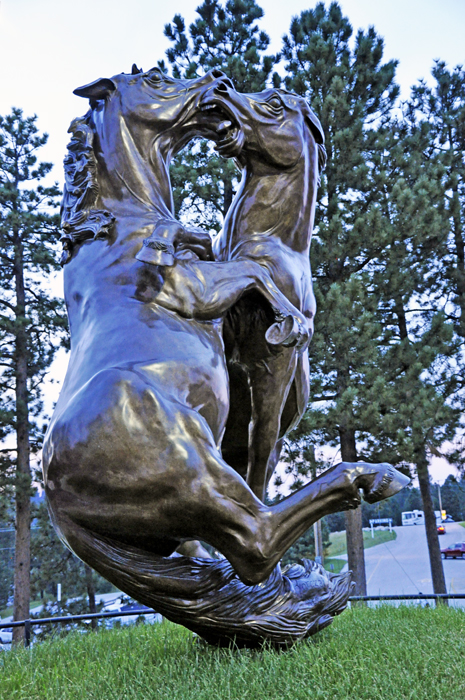
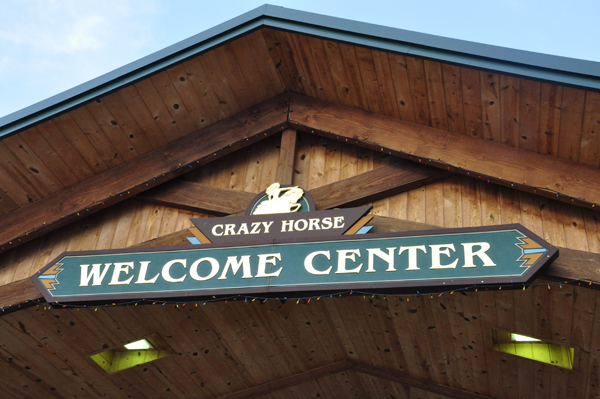

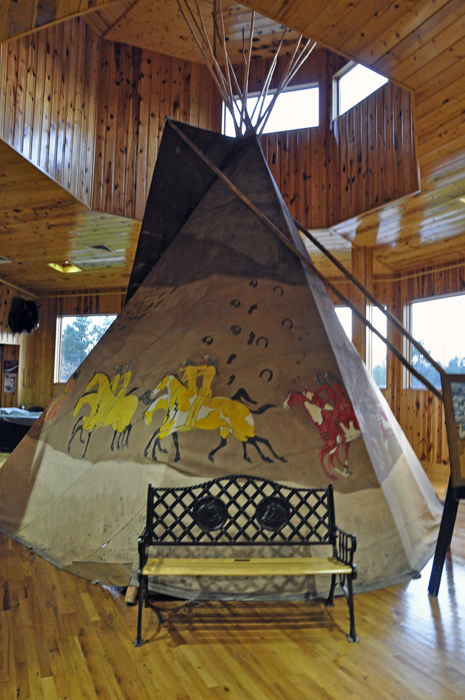
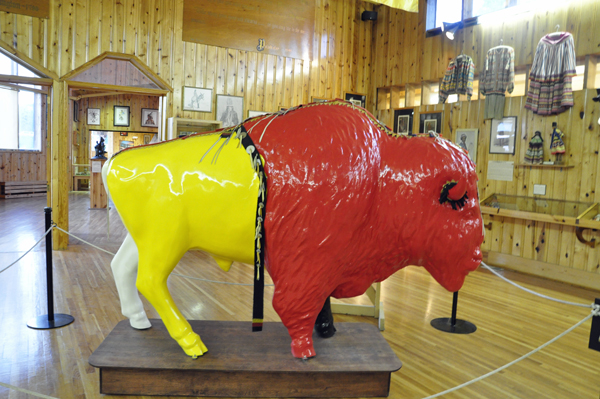
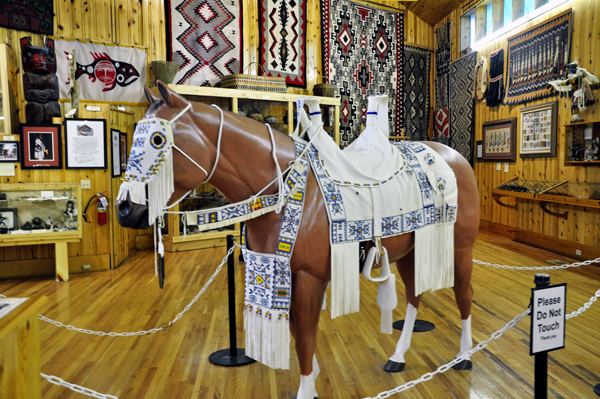
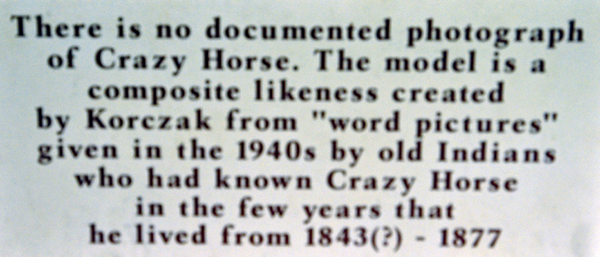

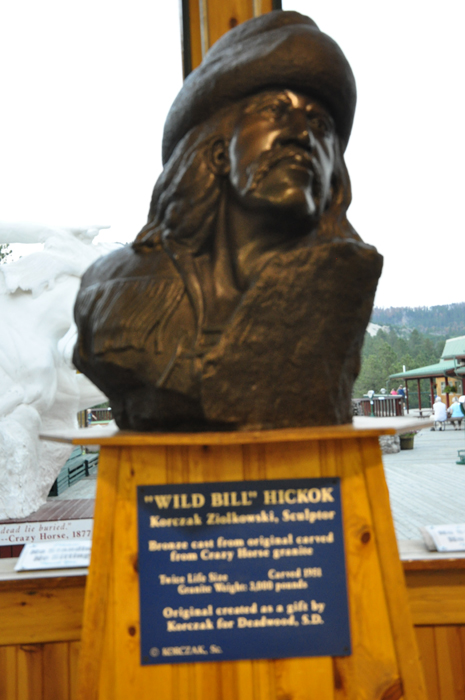
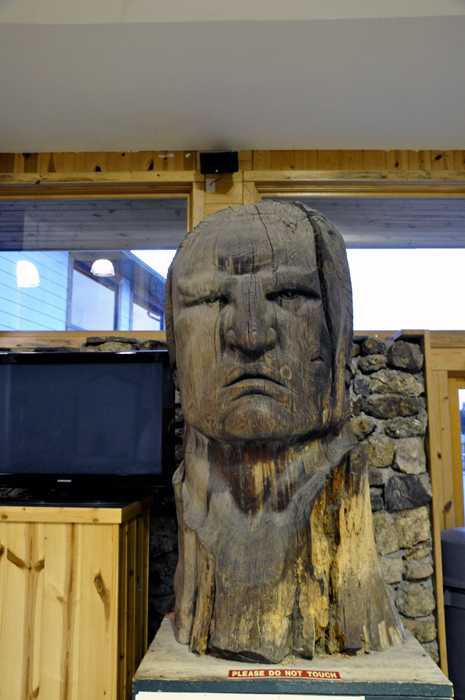
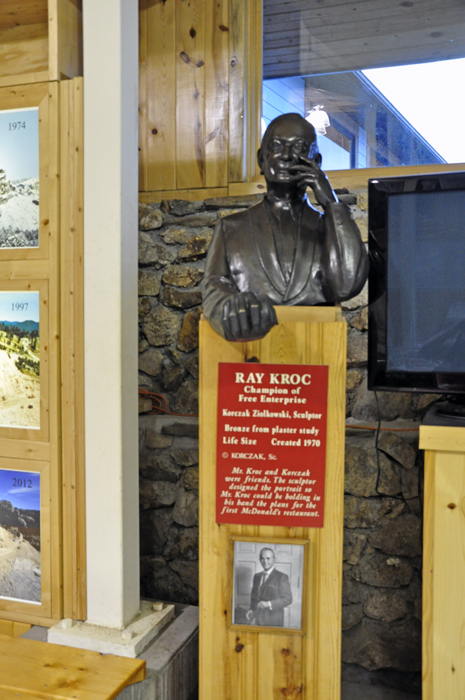
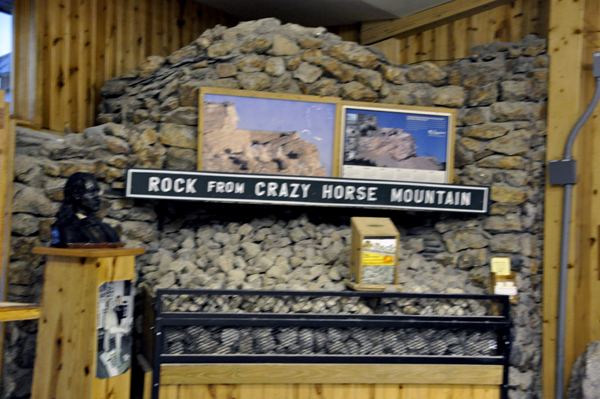
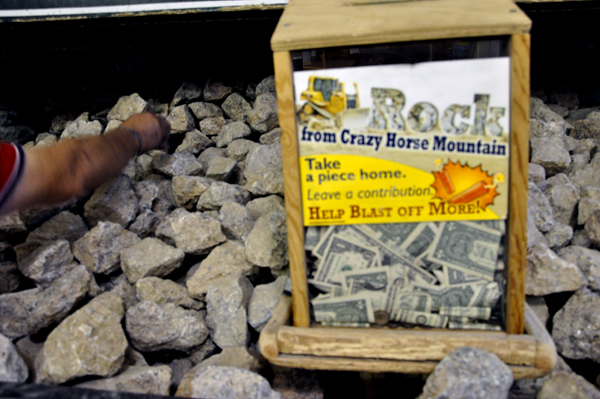
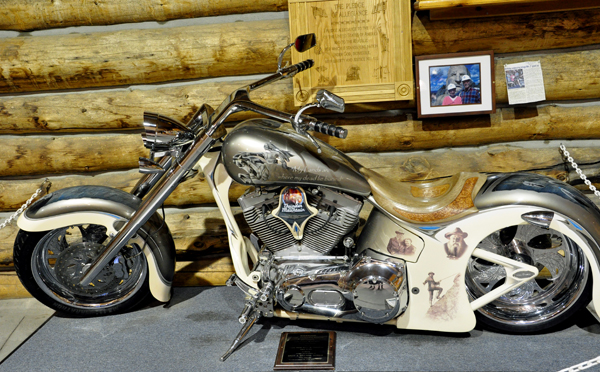
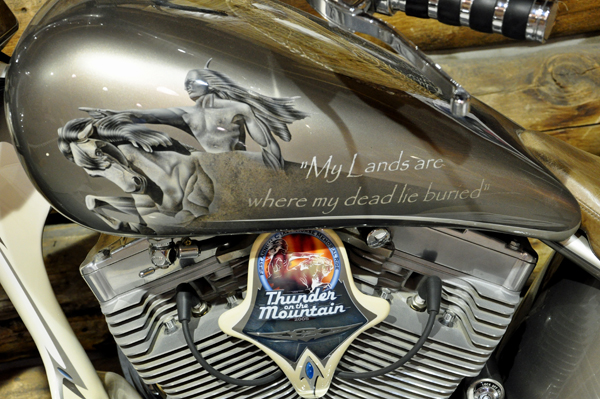
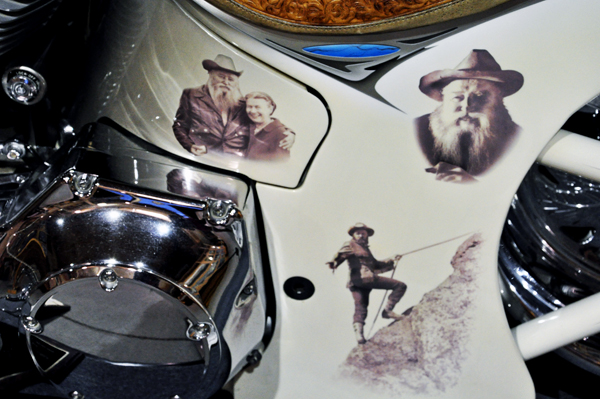

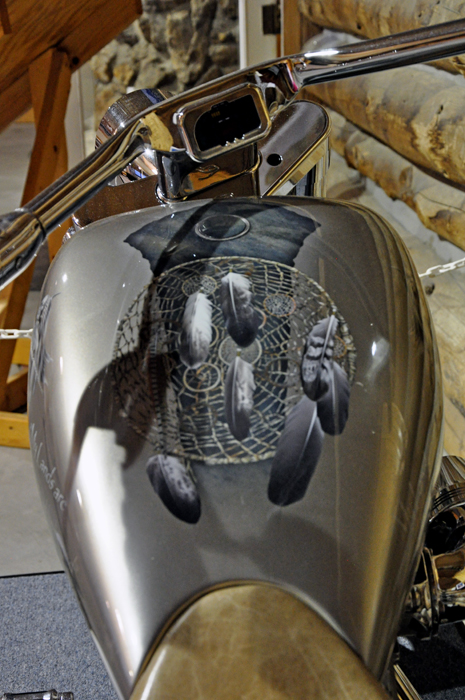
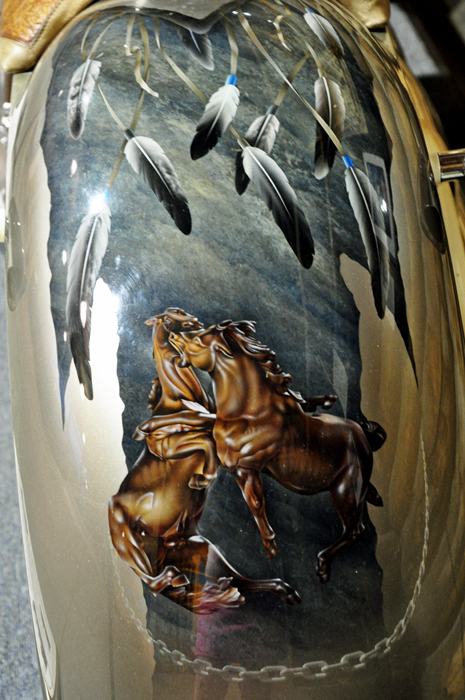
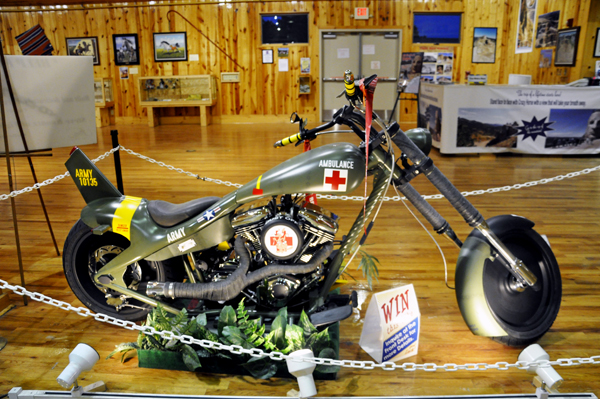
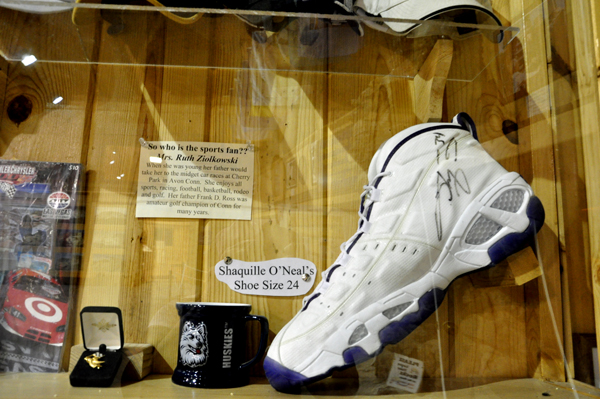
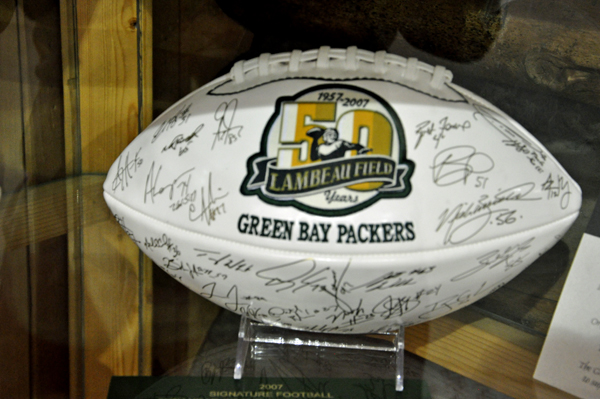


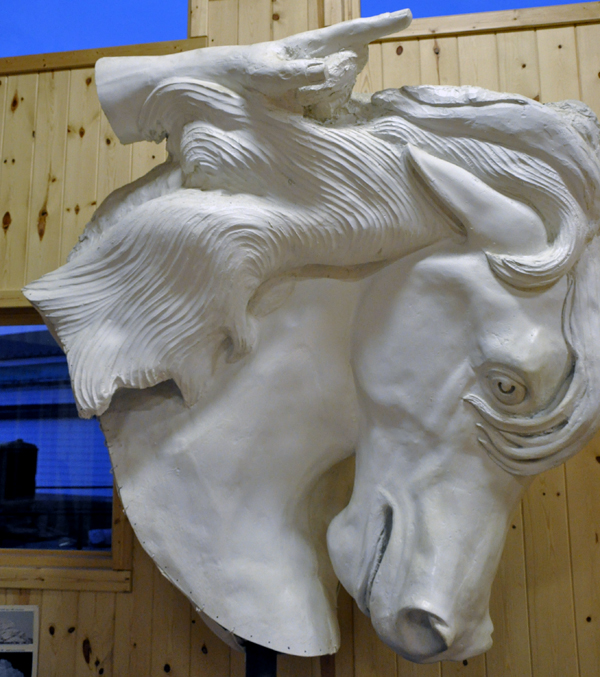

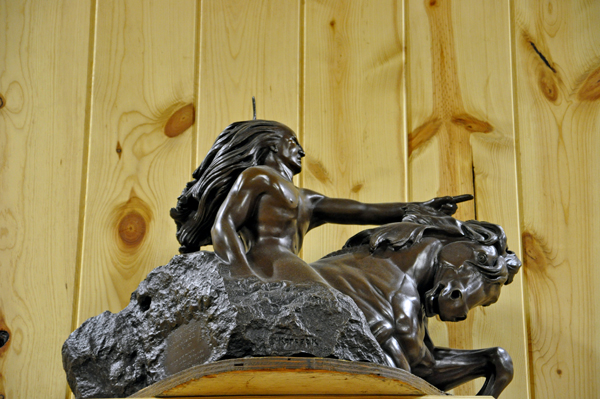
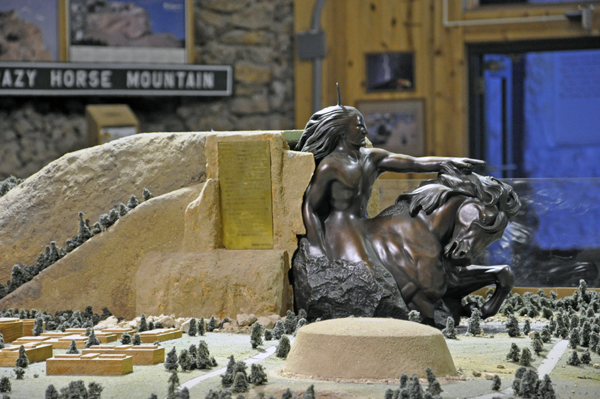
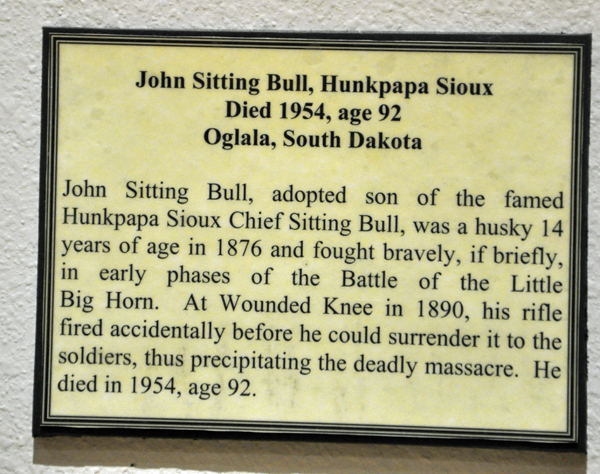
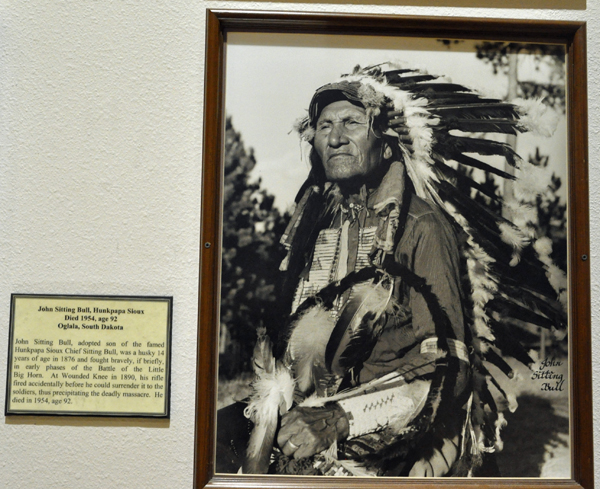
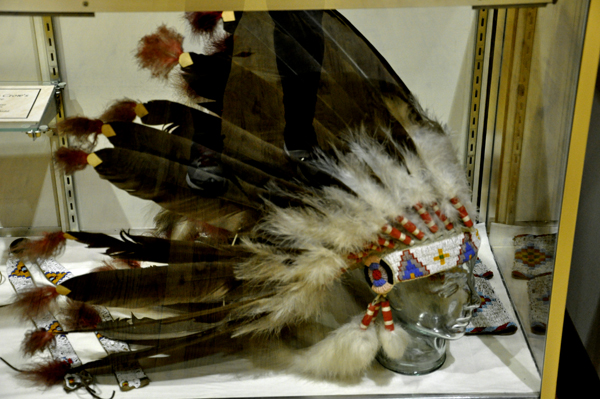
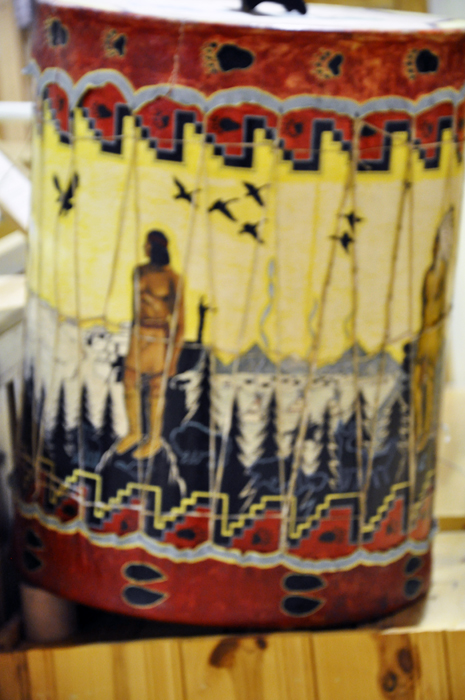
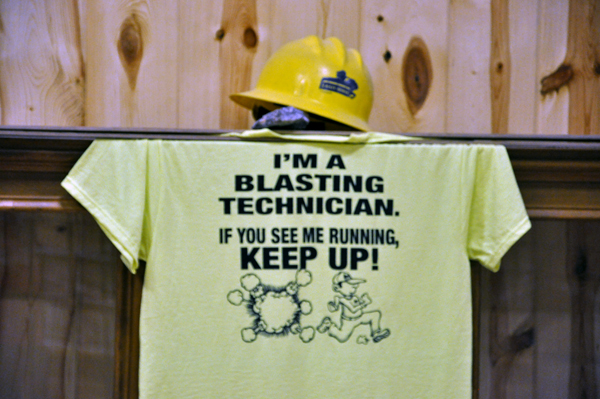
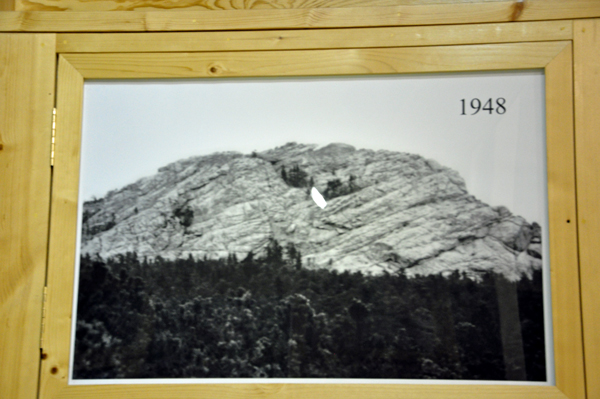
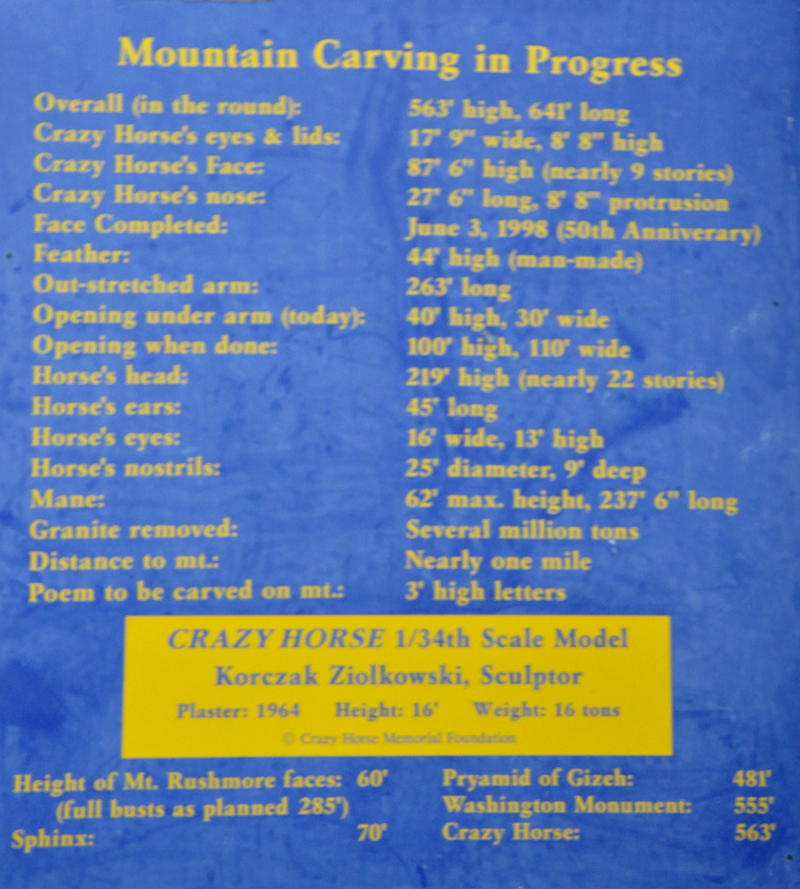
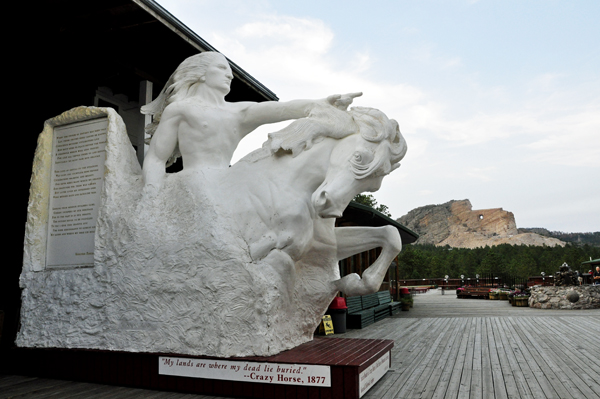
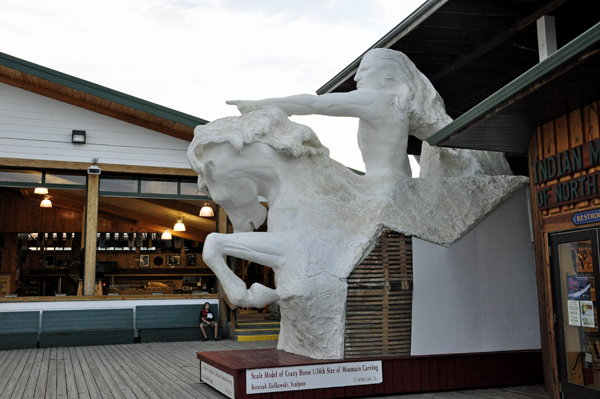
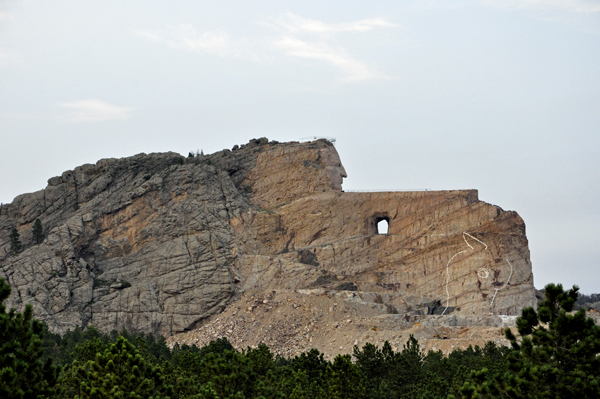
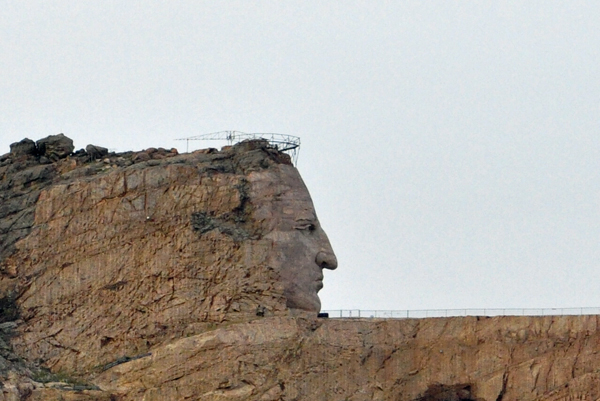
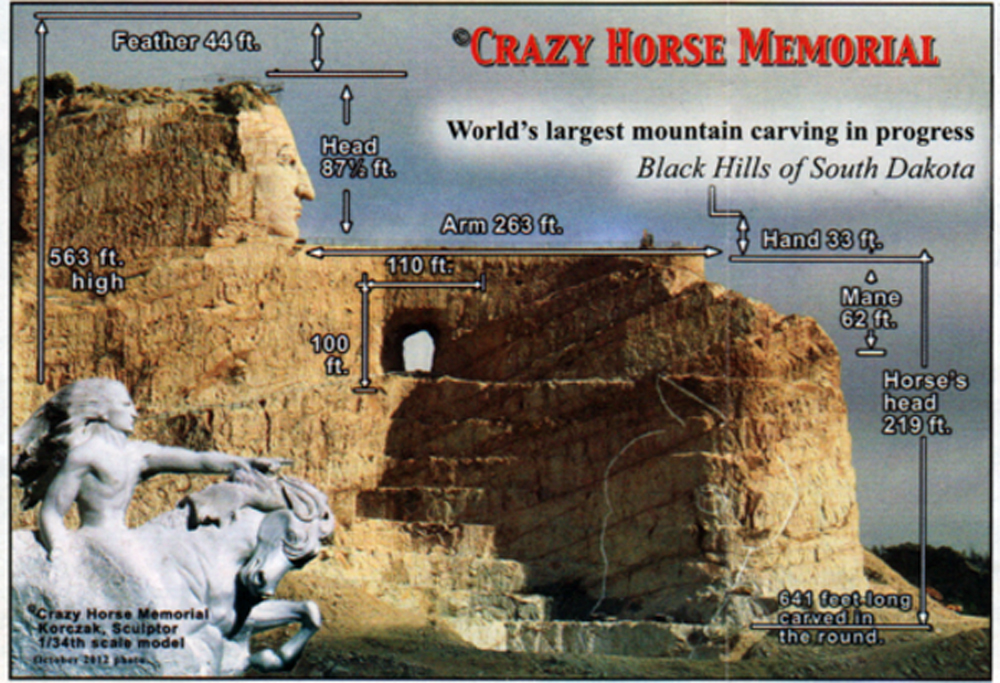
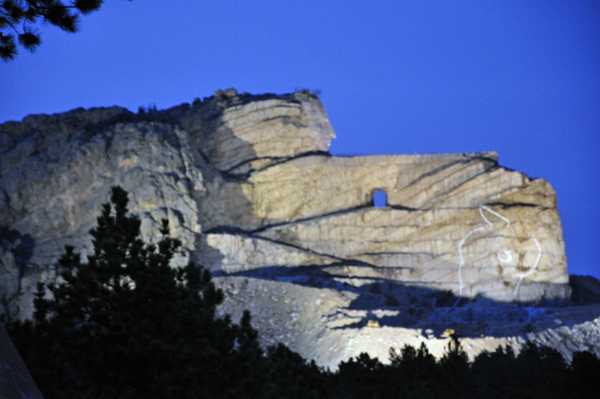
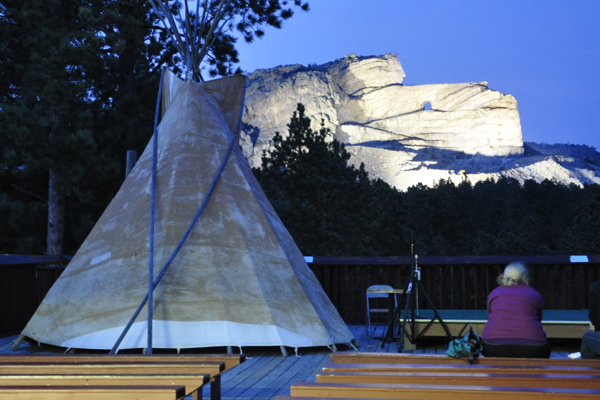
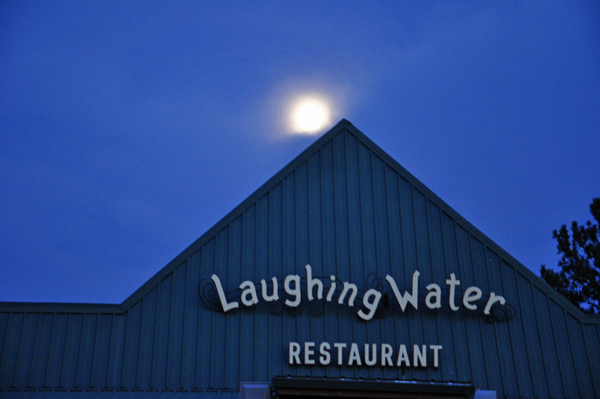
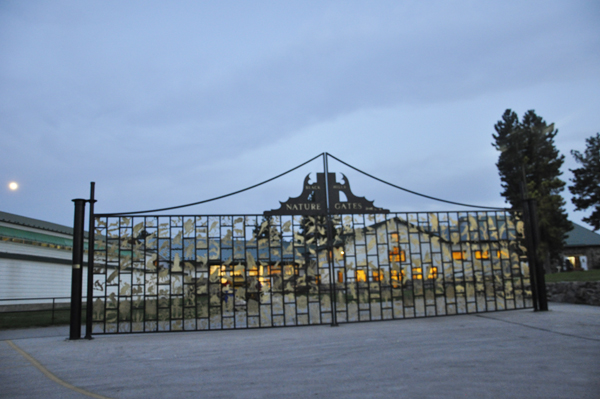
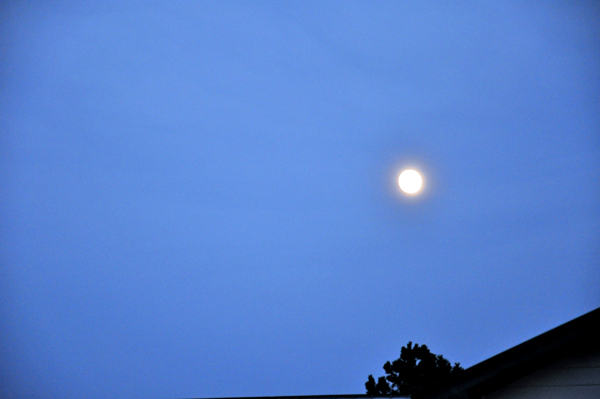
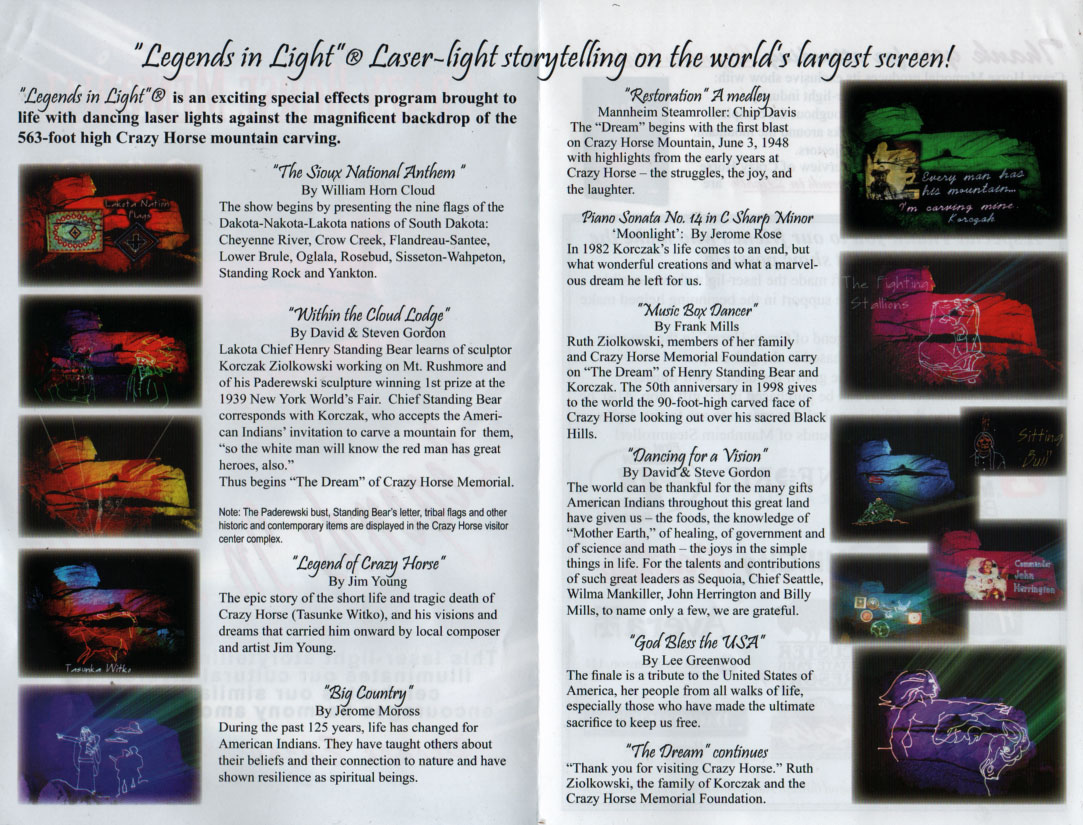
























 If you have already seen all of the 7 sites in South Dakota, please
continue on to
If you have already seen all of the 7 sites in South Dakota, please
continue on to 
